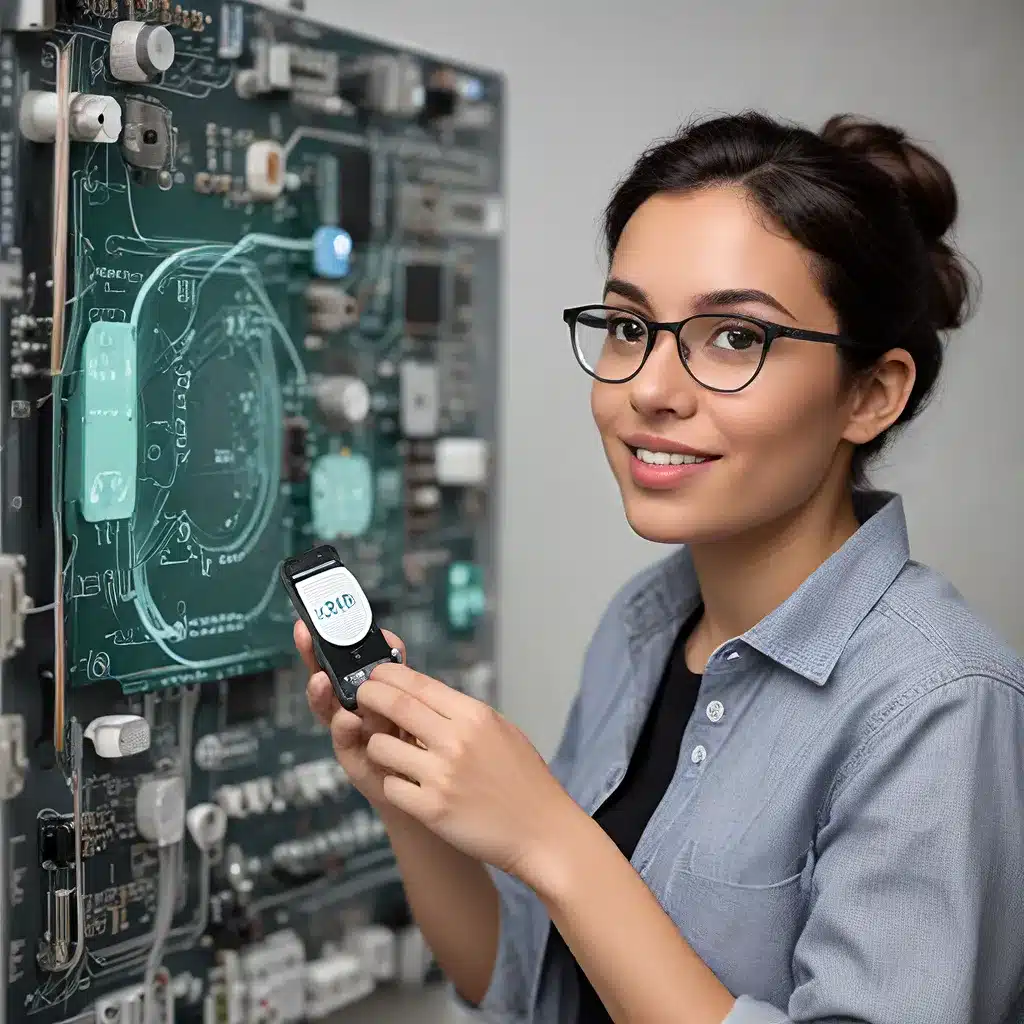
Embracing Accessibility in Sensor Network Design
Sensor networks have become a critical component of the Internet of Things (IoT), enabling the collection and communication of vast amounts of data from diverse environments. As these technologies advance, it is essential to consider the principles of accessibility and equity to ensure that the benefits of sensor networks and IoT are inclusive and accessible to all.
One of the key challenges in sensor network design is accommodating the needs of diverse users, including those with physical, sensory, or cognitive disabilities. Inclusive design approaches aim to create sensor systems that are usable by the widest range of individuals, regardless of their abilities. This may involve incorporating features such as voice-controlled interfaces, tactile input mechanisms, or high-contrast visual displays to cater to users with varying needs.
Research has shown that inclusive design not only benefits individuals with disabilities but can also enhance the overall user experience for all users. By prioritizing accessibility, sensor network designers can create solutions that are more intuitive, efficient, and adaptable, ultimately driving greater adoption and engagement across diverse user populations.
Leveraging Sensor Networks for Inclusive IoT Applications
The applications of sensor networks and IoT span a wide range of industries, from smart cities and environmental monitoring to healthcare and industrial automation. As these technologies become more prevalent, it is crucial to ensure that they are designed and deployed in a way that promotes inclusivity and equity.
One such example is the use of sensor networks in assistive technologies for individuals with disabilities. Wearable sensors, combined with machine learning algorithms, can monitor vital signs, track physical activity, and provide real-time feedback to users and their caregivers. This can help improve the quality of life for individuals with mobility, sensory, or cognitive impairments, enabling them to live more independently and actively participate in their communities.
In smart city initiatives, sensor networks can also play a crucial role in enhancing accessibility and inclusivity. Intelligent traffic management systems, equipped with sensors, can detect and respond to the needs of pedestrians, cyclists, and individuals with disabilities, ensuring safer and more efficient mobility for all. Similarly, sensor-based environmental monitoring can help identify and address issues related to air quality, noise pollution, and accessibility barriers in urban environments.
Securing Sensor Networks for Inclusive IoT
As sensor networks and IoT become more prevalent, the security and privacy of these systems have become increasingly crucial. Ensuring the confidentiality, integrity, and availability of sensor data is essential to protecting the rights and well-being of all users, including those with disabilities or other special needs.
Cryptographic techniques, access control mechanisms, and secure data communication protocols are just a few of the security measures that can be implemented to safeguard sensor networks. Additionally, robust authentication and authorization procedures can help prevent unauthorized access and ensure that only legitimate users can interact with the system.
Inclusive security design should also consider the accessibility requirements of diverse users, such as providing alternative input methods or customizable interfaces for individuals with disabilities. By integrating accessibility and security principles, sensor network designers can create robust and inclusive IoT systems that protect the privacy and safety of all users.
Optimizing Energy Management for Inclusive Sensor Networks
One of the key challenges in sensor network design is energy management. Sensor nodes are often deployed in remote or hard-to-reach locations, making power consumption a critical factor in their longevity and reliability.
Energy-efficient sensor network protocols and hardware optimizations can help address this challenge, ensuring that sensor networks can operate for extended periods without the need for frequent battery replacements or recharging. Techniques such as duty cycling, data aggregation, and energy harvesting can all contribute to improved energy management in sensor networks.
However, it is essential to consider the accessibility implications of energy management strategies. For example, sensor nodes with frequent battery replacements may pose challenges for individuals with limited mobility or dexterity. Energy-harvesting solutions, such as solar-powered sensors, can provide a more sustainable and accessible approach, reducing the need for manual intervention and ensuring the continuous operation of the sensor network.
By integrating energy management and accessibility considerations, sensor network designers can create inclusive and resilient IoT systems that meet the diverse needs of users, regardless of their abilities or resources.
Embracing Inclusive Sensor Network Innovation
As sensor networks and IoT continue to evolve, it is crucial to embrace inclusive design principles that prioritize accessibility and equity. By considering the needs of diverse users, sensor network designers can create innovative solutions that empower individuals, enhance their quality of life, and drive the adoption of these transformative technologies.
Through collaborative research, inclusive design practices, and user-centered development, the sensor network community can unlock the full potential of IoT, ensuring that the benefits of these technologies are accessible to all. By prioritizing inclusivity, sensor network innovators can shape a future where technology truly serves the needs of all members of society, including those with disabilities or other special requirements.
The sensor-networks.org website is dedicated to fostering the development and adoption of inclusive sensor network technologies. By staying informed and engaged with the latest advancements in this field, professionals, researchers, and enthusiasts can contribute to the creation of a more equitable and accessible IoT landscape.